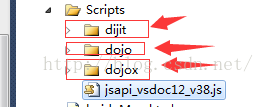
Dojo is an open source DHTML toolkit implemented in JavaScript. The original goal of Dojo was to solve some long-standing problems encountered in developing HTML applications. However, now Dojo has become a powerful tool for developing RIA applications.
Dojo allows Web pages to have dynamic capabilities. We can use Dojo in other environments that support JavaScript.
Using the components provided by Dojo can improve the usability and interaction capabilities of Web applications.
Dojo shields the differences between browsers to a large extent, so there is no need to worry about Web pages being available in certain browsers.
Dojo’s packaging tools can help optimize JavaScript code and generate only the minimum set of Dojo packages required to deploy your application.

 ## 1. Core Dojo package
## 1. Core Dojo package
Contains some additional features that are not included in Base. Usually these features are not as frequently used as the features in Base. Therefore, loading them separately will reduce the burden on the Base package. From this point of view, the Core package provides some practical and useful components, including advanced animation drag and drop, I/O, data management, internationalization, browser duration management, etc.
2. Dijit package
An extended UI library containing Dojo widgets and components. Some examples of these widgets include dialog boxes, calendars, palettes, tooltips, trees, etc. It also includes some form controls, which offer more functionality than standard HTML form controls, as well as some complete layout management options.
3. DojoeXtensions(DojoX)
Contains various sub-projects of the toolbox. Most of the features in DojoX are experimental features, but there are also some stable components and features.
The above is the content of Dojo introductory chapter. For more related content, please pay attention to the PHP Chinese website (www.php.cn)!




